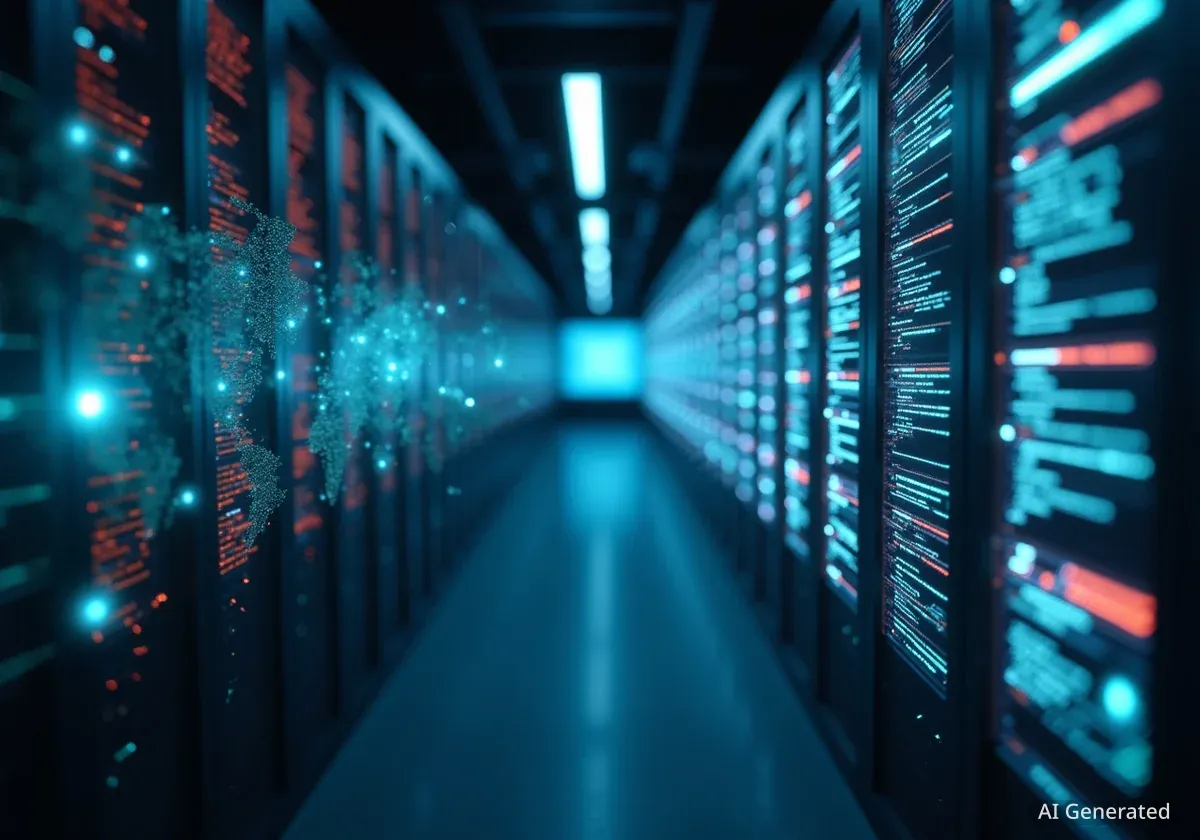Major artificial intelligence companies, including Google DeepMind, Meta, and Nvidia, are increasing their investment in "world models." This strategic shift aims to develop AI systems that can understand and interact with the physical world, moving beyond the text-based limitations of current large language models (LLMs).
The move comes amid growing concerns that the rapid progress seen in LLMs, such as the technology behind ChatGPT, may be reaching a plateau. World models, trained on video and simulation data, represent a new frontier in the quest to achieve artificial general intelligence (AGI) and could unlock applications in robotics, autonomous vehicles, and manufacturing.
Key Takeaways
- Leading AI labs are focusing on world models, which learn from visual and environmental data rather than just text.
- This shift is driven by the perception that large language models (LLMs) are approaching their developmental limits.
- Companies like Google, Meta, and Nvidia are pioneering this technology for applications in robotics, simulation, and physical AI.
- World models aim to give AI a common-sense understanding of physics and the real world, a capability LLMs lack.
- The potential market for this technology is estimated to be massive, with applications spanning manufacturing, healthcare, and entertainment.
A New Direction Beyond Language AI
The artificial intelligence industry is exploring a new path in its pursuit of advanced machine intelligence. For years, the focus has been on large language models, which are trained on vast amounts of text data to generate human-like conversation and content. However, the performance gains between new LLM versions from companies like OpenAI, Google, and xAI have started to diminish, despite massive financial investments.
This has led researchers to concentrate on world models, a different type of AI designed to build an internal understanding of how the physical world operates. Instead of learning from text, these systems are trained on video streams, robotic interactions, and complex simulations. The goal is to create an AI that can reason about cause and effect in a physical environment, a critical step toward creating autonomous agents and robots.
What Are World Models?
World models are AI systems that learn a compressed, predictive model of an environment. By observing data (like video), they create an internal simulation of that environment's rules and physics. This allows the AI to predict future outcomes of actions and plan more effectively, much like humans use a mental model of the world to navigate daily life.
How Tech Giants Are Building World Models
Several of the world's most influential technology companies have recently unveiled significant progress in the development of world models, each taking a unique approach to solving this complex challenge.
Google DeepMind's Generative Environments
Google DeepMind recently introduced Genie 3, a model that generates interactive video environments frame by frame. Unlike previous video generation tools that create an entire clip at once, Genie 3 considers past interactions to build the next frame, creating a more dynamic and responsive simulation.
"AI . . . remains very much limited to the digital domain," said Shlomi Fruchter, co-lead of Genie 3 at Google DeepMind. "By building environments that look like or behave like the real world, we can have much more scalable ways to train the AI . . . without the real implications of making a mistake in the real world."
Meta's Approach to Passive Learning
Meta is developing models that learn in a way that mimics how human children observe the world. Its V-JEPA models are trained on raw video content to build an understanding of object permanence and basic physics. The project is led by Yann LeCun, Meta's chief AI scientist and a vocal proponent of world models over LLMs.
LeCun, often called one of the "godfathers" of modern AI, has consistently argued that LLMs will never achieve true reasoning or planning abilities. His lab, Facebook Artificial Intelligence Research (FAIR), released the second version of V-JEPA in June and has begun testing it on robots to translate its digital understanding into physical action.
Nvidia's Vision for 'Physical AI'
Nvidia, the company whose GPUs power the current AI boom, is also heavily invested in this area. CEO Jensen Huang has stated that "physical AI" will be the company's next major growth driver, revolutionizing robotics and industry. The company's Omniverse platform is a sophisticated tool for creating and running digital simulations of real-world environments.
A $100 Trillion Opportunity?
Rev Lebaredian, Nvidia's vice president of Omniverse, suggested the market for world models could approach the size of the global economy. "What is the opportunity for world foundation models? Essentially . . . $100tn if we can make an intelligence that can understand the physical world and operate in the physical world," he said.
Data Collection and Early Applications
Building effective world models requires an immense amount of data about the physical world. Some companies have found creative ways to gather this information, while others are already applying early versions of the technology in commercial products.
Gaming as a Data Source
Niantic, the company behind the augmented reality game Pokémon Go, has a significant advantage in data collection. Over nine years, the game's 30 million monthly players have helped map over 10 million real-world locations. Even after selling the game, Niantic Spatial (its new name) continues to use anonymized data from scans of public landmarks to build its comprehensive world map.
"We have a running start at the problem," said John Hanke, CEO of Niantic Spatial, referring to the massive dataset his company has already collected.
Transforming Entertainment and Gaming
The entertainment industry is one of the first sectors to benefit from world models. Startups are using this technology to create more realistic and interactive digital content.
- Runway, a video generation startup with partnerships with studios like Lionsgate, uses world models to generate interactive gaming environments with dynamic stories and characters in real time.
- World Labs, a startup founded by AI pioneer Fei-Fei Li, is developing technology that can create a game-like 3D world from a single image.
Cristóbal Valenzuela, CEO of Runway, explained that traditional video generation is a "brute-force approach" that fakes movement. In contrast, world models possess a foundational understanding of the scene, allowing for more realistic physics and interactions.
The Road Ahead Challenges and Timelines
Despite the promising advancements, the development of fully functional world models remains an unsolved technical problem. These systems demand extraordinary amounts of data and computational power, far exceeding what is required for many current AI models. The process of collecting relevant physical data and creating accurate simulations is both costly and time-consuming.
Experts believe the timeline for achieving human-level intelligence through this approach is still long. Meta's Yann LeCun has estimated it could take another 10 years to develop AI systems capable of powering machines with this level of understanding. However, the potential impact is considered transformative.
If successful, world models could bridge the gap between digital AI and the physical world, leading to breakthroughs in robotics, autonomous systems, and scientific discovery. As Nvidia's Lebaredian noted, this technology could "open up the opportunity to service all of these other industries and amplify the same thing that computers did for knowledge work." The race to build a true world model is not just about the next chatbot; it's about the future of intelligent machines.





